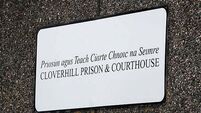Portraits of the nation: Zurich Prize comes to Cork for first time

As the Zurich Portrait Prize comes to Cork for the first time, hears how our definition of the genre has expanded in the modern age
As the Zurich Portrait Prize goes on display Leeside for the first time, Crawford Art Gallery director Mary McCarthy is keen to point out the second city’s connection both to the annual prize and to the tradition of portraiture in general.











